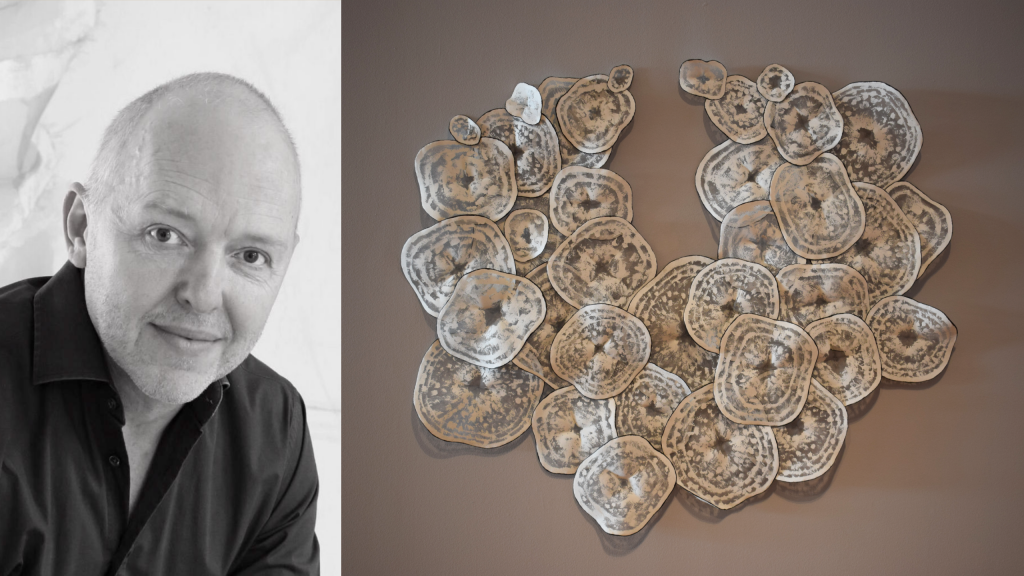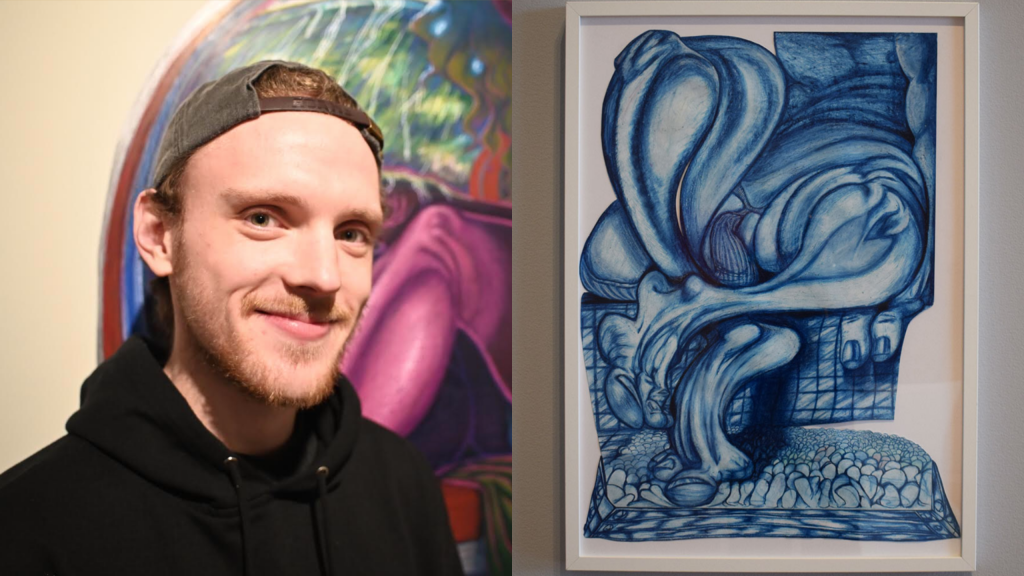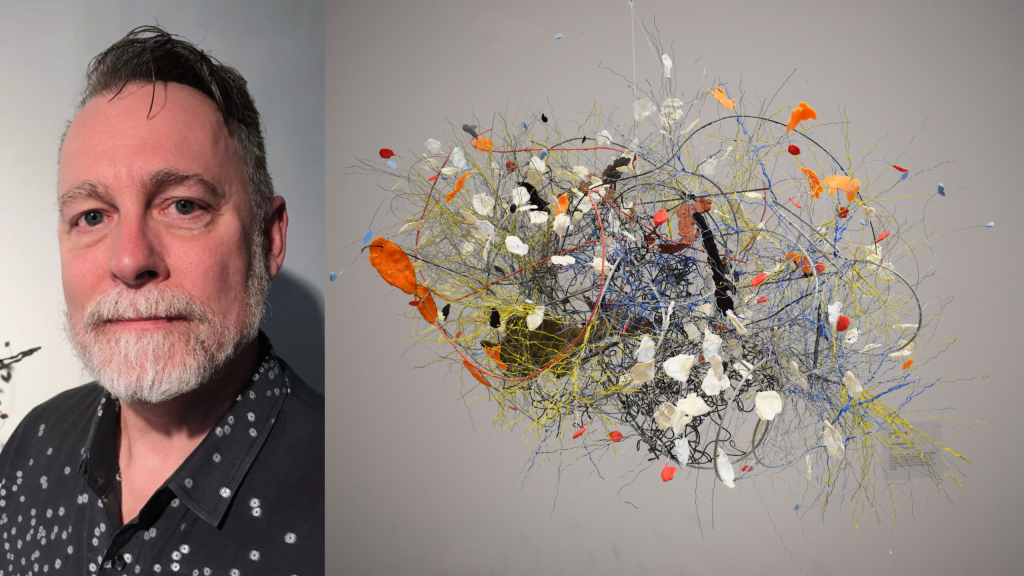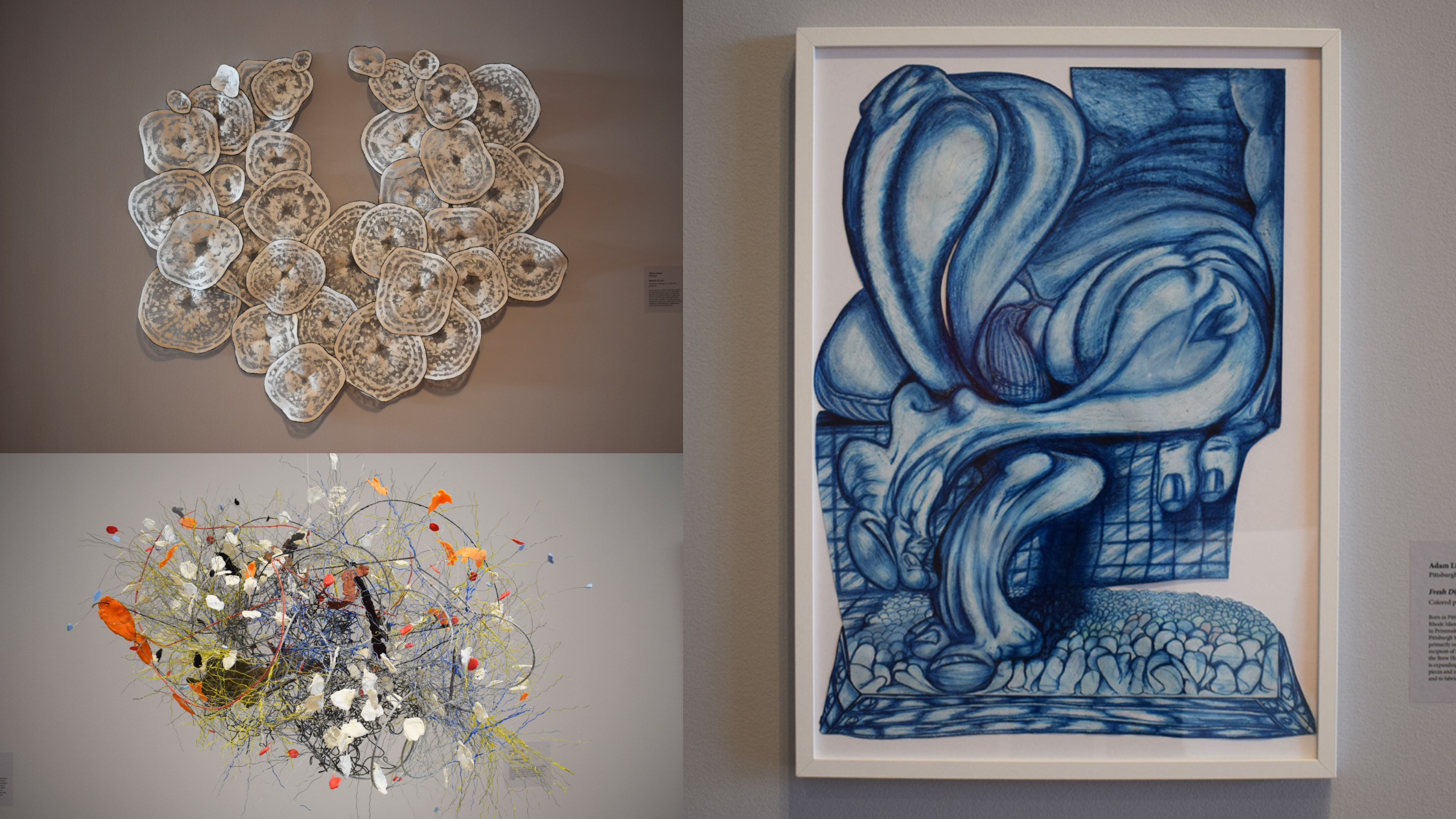Artists’ Answers: Atticus Adams, Adam Linn and Garry Pyles
Have you ever looked at an artwork and wished you could pick the artist’s brain about it? Us, too!
While perusing the 107th Associated Artists of Pittsburgh Annual, we came across three thought-provoking works of art, Botanica II by Atticus Adams, Fresh Dipped by Adam Linn, and Love Supreme by Garry Pyles, that made us curious. So, we decided to ask the artists a few questions.
Find out what inspired these works of art, how they know when an artwork is done, what artist tool they can’t live without, and what’s their favorite work of art!
Atticus Adams, Botanica II, 2019

What inspired the piece, Botanica II, that is in the AAP exhibit? Much of my work has a foundation of spending summers with my grandmother – going in and out of her screen door. Botanica II is a fusion of inspiration and memory of those summers, her garden, her screen door, and the white washed out buildings.
How do you know when an artwork is finished? I know a work is finished when I get this gut feeling to stop. I’ve learned the hard way when I’ve ignored that feeling :-).
What is your most important artist tool? Is there something you can’t live without in your studio? My art is cut and shaped mostly by hand – sometimes I use a smooth stone or an old chair leg. If I had to pick one thing – it would be scissors.
What’s your favorite work of art and why?Hmmm, I don’t have just one favorite – but I do love a metal sculpture by Harry Bertoia, Dandelion. It’s beautiful and playful and reminds me of childhood fun.
Adam Linn, Fresh Dipped, 2019

What inspired the piece, Fresh Dipped, that is on view in the 107th Associated Artist of Pittsburgh Annual exhibition at The Westmoreland? This piece was inspired by the simple sensation of stepping out of the threshold of a shower/bath and onto a dry carpeted surface. I am interested in rendering spaces that delineate queer experience through placing the figure in quotidian environments. These are often areas of the home where objects and actions are imbued with anthropomorphism and a cartoonish sense of exaggeration. In recreating these familiar spaces as stylized, fleshy worlds the viewer is forced into flirting with the corporeal underbelly of the structures we inhabit.
How do you know when an artwork is finished? Oftentimes the surface I am working on will get to a point when it can no longer tolerate the beating of the mark and it will begin to deteriorate. I try to push the material to its breaking point, but ideally no further. As the material degrades it changes properties, which alter the quality of the marks on the surface. I use this as an opportunity to vary the appearance of the image on the substrate thereby creating depth and nuance.
What is your most important artist tool? Is there something you can’t live without in your studio? Colored pencils are an absolute must. I use them to map out the drawings and I love that they do not smudge. They are also resilient enough to hold up against other marks without rearranging the drawing. I use them in both pencil and stick form, and depending on the image, I can melt the pigment into a paint-like wash with isopropyl alcohol.
What’s your favorite work of art and why? I definitely do not have one particular favorite work of art. Instead, I think more in terms of artists I like. Jared French, Lisa Yuskavage, Martin Wong, Didier William, Julien Ceccaldi, Ellen Berkenblit…to name a few. I look at artists who explore varied use of line, stylized bodies and queerness found in the slippage between figures and the spaces they inhabit.
Garry Pyles, Love Supreme, 2018

What inspired the piece, Love Supreme, that is in the AAP exhibit? I often listen to jazz music. It relaxes and challenges me and often makes me feel better about the world. This piece was inspired by John Coltrane’s Love Supreme. I read somewhere that he created to express his desire for his music to heal and bring people together. Man do we really need that sentiment expressed today. As a visual artist, I have attempted to express that sentiment and feeling that I get when listening to jazz in this sculpture.
How do you know when an artwork is finished? What a great question! I will often work on a piece for a while and then let it hang in the studio to allow me time to look and think about it. It’s a sometimes fun and sometimes tortuous process. Eventually something clicks and the process of completing the piece typically is pretty quick once I get to that point. Not sure how else to explain it, but..It’s done when it feels done.
What is your most important artist tool? Is there something you can’t live without in your studio? I work very intuitively using my hands mostly to shape the wire and the wax. The only tools that I use are melting pots for the wax, wire cutters and a very old palette knife that I have had since my days as a painter. I’ve never thought of it till you asked the question, but I have had that knife over 30 years so it’s an old friend that I would hate to create without.
What’s your favorite work of art and why? My husband and I travel a fair amount and both are greatly influenced and inspired by the works of art we see while traveling. Picking one favorite for me would be impossible. I do tend to gravitate toward sculptural works of art. I love El Anatsui, Anish Kapoor, Alexander Calder, Nick Cave and locally Thaddeus Mosley, Dee Briggs and of course, Atticus Adams.
Fascinated by these artists’ works and words? Missed their Artist Talk, on Dec. 5, 6-7pm? Find out more about Atticus Adams, Adam Linn and Garry Pyles.
